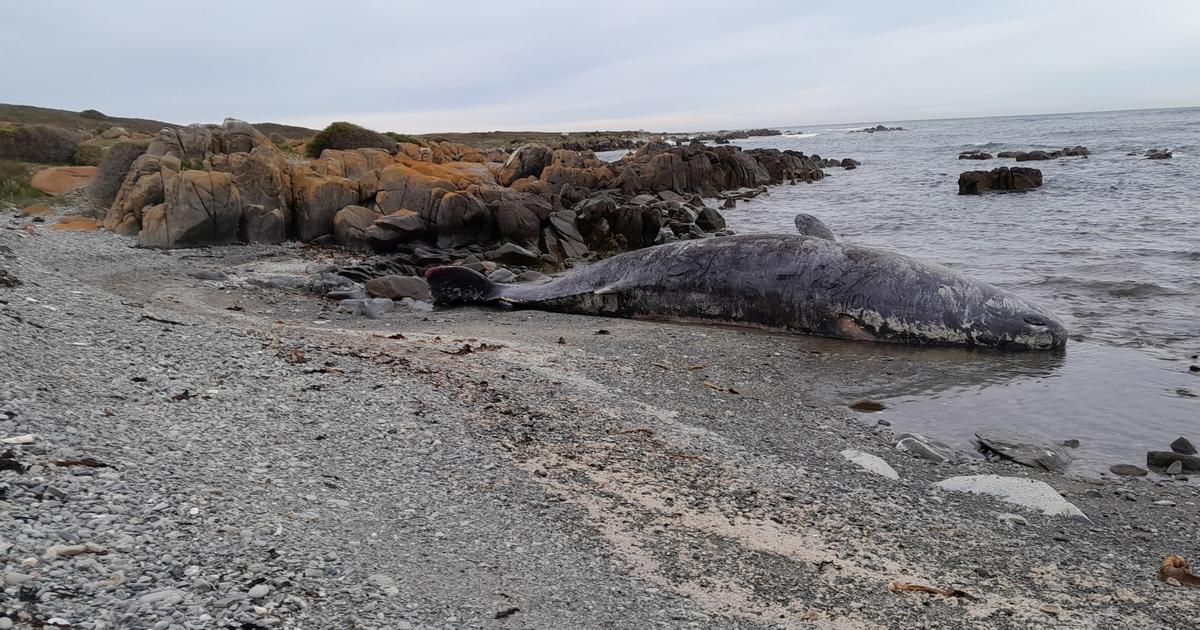It is a new stranding of magnitude of cetaceans.
On Wednesday September 21, 235 pilot whales, or pilot dolphins, were discovered stranded in Macquarie Harbor on the west coast of Tasmania, Australia.
Of these, only 32 survived, according to the Tasmanian State Wildlife Service.
"We expect the vast majority to return to the sea,"
Sam Thalmann, a marine biologist, told AFP.
In September 2020, already, 500 pilot whales had washed up on the coasts of this island state in southern Australia.
Read alsoAfter the ban on whaling, the fragile rebirth of this giant of the oceans
If the first hypotheses put forward by the local authorities point to unfavorable environmental conditions, the causes of this event could be broader.
“Marine mammal traps”
The first reason could be natural.
“Tasmania is one of the top places for cetacean strandings.
Some people call these areas 'marine mammal traps' because of the speed at which the tide can
recede," Karen Stockin, a researcher specializing in the ecology and biology of marine mammals at the Institute, told AFP. Massey University of New Zealand.
“
It is possible that this major stranding - because 230 at once is a lot - was caused by a disturbance within their natural environment
, complete for
Le Figaro
Léa David, researcher in marine ecology at the Eco Ocean Institute of Montpellier.
I am thinking in particular of noise pollution.
For example, an explosion can ring cetaceans and damage their
sonar
.
And to clarify: “
All this limits their communications.
They use sound to socialize and find their prey.
Read also
Praise of the whale
, by Camille Brunel: the eternal search for the sperm whale
Another possibility advanced, that of a mimicry between cetaceans.
“
In this type of animal, there is a real social culture and very strong bonds between them.
It is not excluded that these animals followed an important member of the group like the grandmother or the little one
,
”
explains Léa David.
It is therefore not impossible that a member of the group, sick, left to run aground on a beach and that the other cetaceans of the group followed.
The prey in question?
Shifting prey inshore is another option.
Pilot
whales feed mainly on squid.
Global warming could have caused a movement of these species towards the coasts
, ”says Léa David.
Forcing the cetaceans to accompany this movement.
A hypothesis that Éric Demay, cetologist and president of the NGO Tursiops, sweeps away.
“That would mean cetaceans are dumb.
I find that very simplistic
, he says.
They are able to hunt with very little water, thanks to highly developed techniques.
Mistakes with young can happen, but pilot whales don't normally have to approach the coast
.
Éric Demay also recalls that
“there have always been strandings”
in this part of the globe.
"On pilot whales, it's a classic
," he insists.
Read alsoBags, fishing lines, packaging: the catalog of plastics that suffocate marine animals
It is therefore difficult to stop at one reason in particular, and studies must continue to understand the phenomenon.
"It's a big question that we all ask ourselves.
And there are most certainly cause and effect links that we still do not know”
, summarizes Léa David.






